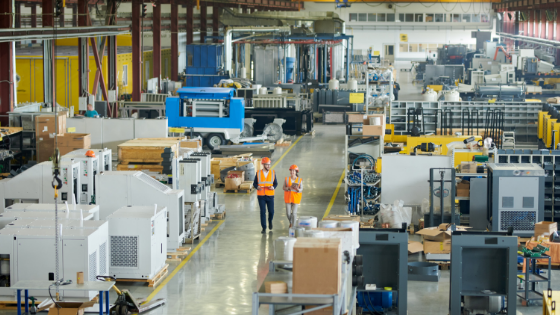Keeping your employees safe is a full-time job. Health and safety in manufacturing are in a league of their own.
Manufacturing employees face a unique set of risks every day, from muscle injuries to slipping hazards to dust. In order to protect your employees, you have to be at the top of your game.
Here are four essential tips to help you keep your employees safe every day.
1. Hunt for Hazards (and Control Them)
First things first: you need to be on the prowl for potential hazards in your workplace. To determine the unique risks that your employees face, you have to analyze the nature of the work they do for you. Are they asked to do a lot of heavy lifting? Do they work around liquids, creating potential slipping hazards?
The Occupational Safety and Health Administration (OSHA) offers extensive industry guidelines that you can use as a compliance checklist.
From there, you need to address the hazards you identify. This can generally be done in four steps:
- See if you can take steps to eliminate the hazard
- If it cannot be eliminated, substitute it for something safer
- Try to isolate people from the hazard (i.e. machines completing a task instead of a person)
- Implement administrative controls, like safety policies
Your goal is to get rid of the threat. Failing that, you have to change the way that people work so that the hazard isn’t an issue.
2. Implement Ongoing Safety Training
Part of this process is implementing ongoing safety training programs for your workers.
For example, let’s say you have new employees. It should be mandatory for those employees to attend safety training before they’re allowed to join the workplace. These programs should be run by a trained safety instructor who ensures that employees know their rights and responsibilities.
But current employees aren’t off the hook either. You should institute periodic safety training programs for current employees to get a refresher on safe workplace procedures. If a policy or procedure changes, employees should be trained to do the procedure the new way.
3. Seek Resources
The best way to make safety training a part of your regular workplace roster is to always look for new safety resources. After all, regulations and safety procedures change all the time. If you’re not looking to learn, how can you expect your employees to keep learning?
For example, OSHA and your industry association are good places to start. Many insurance companies will also provide safety training services to qualifying members.
4. Check, Double-Check, and Check Again
Finally, you have to keep on checking for hazards on a regular basis. Part of this is building a rock-solid workplace safety culture. Your employees should feel comfortable going to their manager if they see a safety issue, and they should feel confident that their manager will address the problem they raise.
This also involves creating an environment where your employees look out for each other. Spend some time encouraging workplace bonding and a communicative culture – you’ll be amazed by how much it benefits your safety program.
Mastering Health and Safety in Manufacturing
Health and safety in manufacturing is an undertaking, but it’s not an impossible battle by any stretch of the imagination. You just have to be willing to do your homework and commit to finding the right resources.
We can help with that.
EHS Insight offers top-of-the-line EHS software to employers just like you – companies that think about sending their workers home to their families just as much as their bottom line. Click here to check out pricing for our safety software, or use our contact page to find out more about how we can help you create a safer working environment.
Featured Resources:
